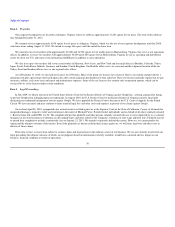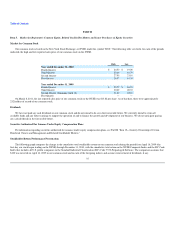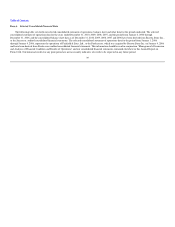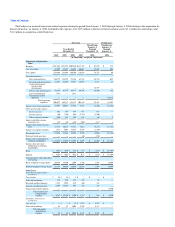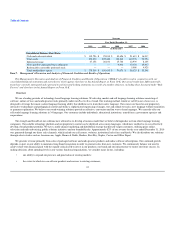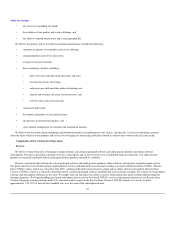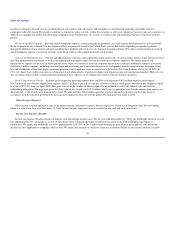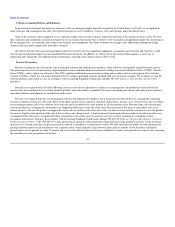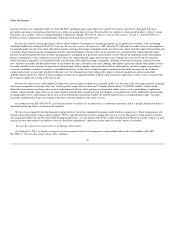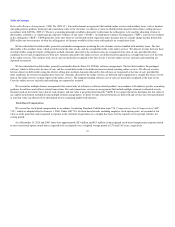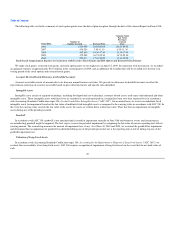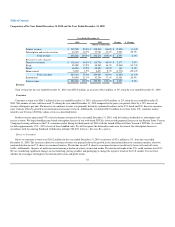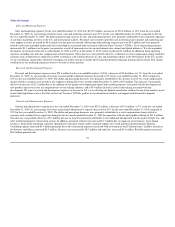Rosetta Stone 2010 Annual Report Download - page 48
Download and view the complete annual report
Please find page 48 of the 2010 Rosetta Stone annual report below. You can navigate through the pages in the report by either clicking on the pages listed below, or by using the keyword search tool below to find specific information within the annual report.
Table of Contents
Critical Accounting Policies and Estimates
In presenting our financial statements in conformity with accounting principles generally accepted in the United States, or GAAP, we are required to
make estimates and assumptions that affect the reported amounts of assets, liabilities, revenues, costs and expenses and related disclosures.
Some of the estimates and assumptions we are required to make relate to matters that are inherently uncertain as they pertain to future events. We base
these estimates and assumptions on historical experience or on various other factors that we believe to be reasonable and appropriate under the circumstances.
On an ongoing basis, we reconsider and evaluate our estimates and assumptions. Our future estimates may change if the underlying assumptions change.
Actual results may differ significantly from these estimates.
We believe that the critical accounting policies listed below involve our more significant judgments, assumptions and estimates and, therefore, could
have the greatest potential impact on our consolidated financial statements. In addition, we believe that a discussion of these policies is necessary to
understand and evaluate the consolidated financial statements contained in this annual report on Form 10-K.
Revenue Recognition
Revenue is primarily derived from the sale of packaged software and audio practice products, online software subscriptions and professional services.
Our professional services include training, implementation services and dedicated conversational coaching associated with Rosetta Stone TOTALe. Rosetta
Stone TOTALe online, which was released in July 2009, combines dedicated conversational coaching and an online software subscription. Rosetta Stone
Version 4 TOTALe, which was released in September 2010, combines packaged software and dedicated conversational coaching. We recognize revenue for
software products and related services in accordance with Accounting Standards Codification subtopic 985-605, Software: Revenue Recognition("ASC
985-605").
Revenue is recognized when all of the following criteria are met: there is persuasive evidence of an arrangement; the product has been delivered or
services have been rendered; the fee is fixed and determinable; and collectability is probable. Revenues from packaged software and audio practice products
and online software subscriptions are recorded net of discounts.
Revenue is recognized from the sale of packaged software and audio practice products when the product has been delivered, assuming the remaining
revenue recognition criteria have been met. Software products include sales to end-user customers and resellers. In most cases, revenue from sales to resellers
is not contingent upon resale of the software to the end user and is recorded in the same manner as all other product sales. Revenue from sales of packaged
software products are recognized as the products are shipped and title passes and risks of loss have been transferred. For most of our product sales, these
criteria are met at the time the product is shipped. For some sales to resellers and certain other sales, we defer revenue until the customer receives the product
because we legally retain a portion of the risk of loss on these sales during transit. A limited amount of packaged software products are sold to resellers on a
consignment basis. Revenue is recognized for these consignment transactions once the end-user sale has occurred, assuming the remaining revenue
recognition criteria have been met. In accordance with Accounting Standards Codification subtopic 985-605-50, Software: Revenue Recognition: Customer
Payments and Incentives ("ASC 985-605-50"), price protection for changes in the manufacturer suggested retail value granted to resellers for the inventory
that they have on hand at the date the price protection is offered is recorded as a reduction to revenue. We offer customers the ability to make payments for
packaged software purchases in installments over a period of time, which typically ranges between three and five months. Given that these installment
payment plans are for periods less than 12 months and a successful collection history has been established, revenue is recognized at the time of sale, assuming
the remaining revenue recognition criteria have
45


